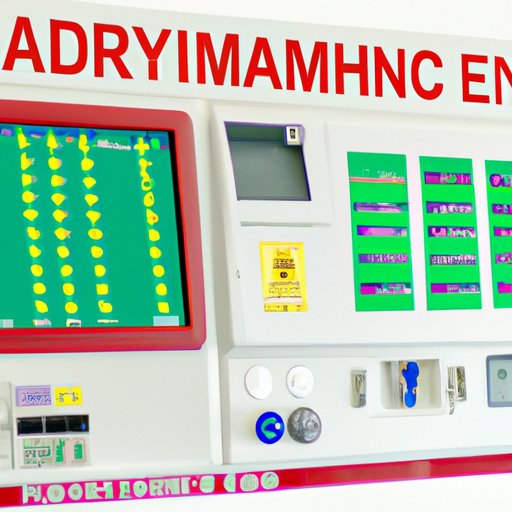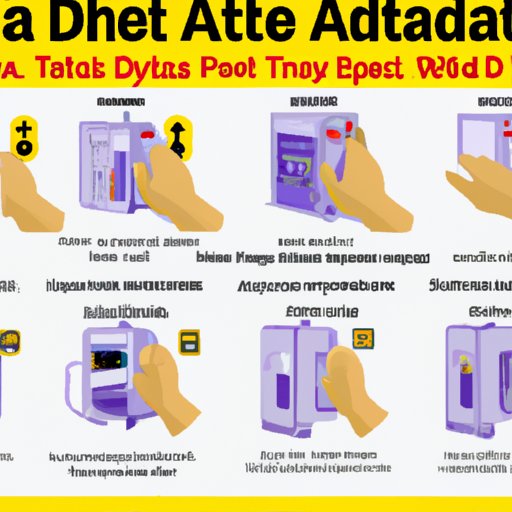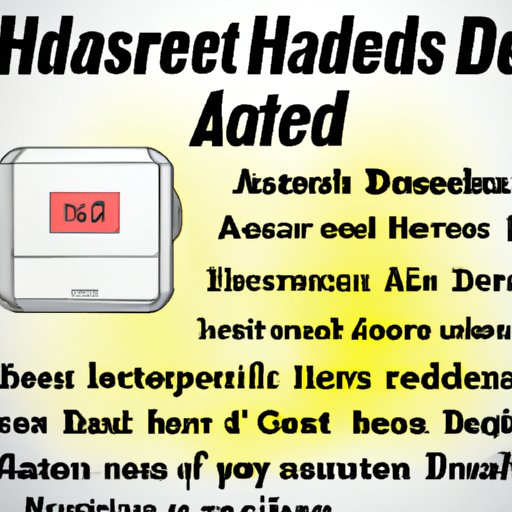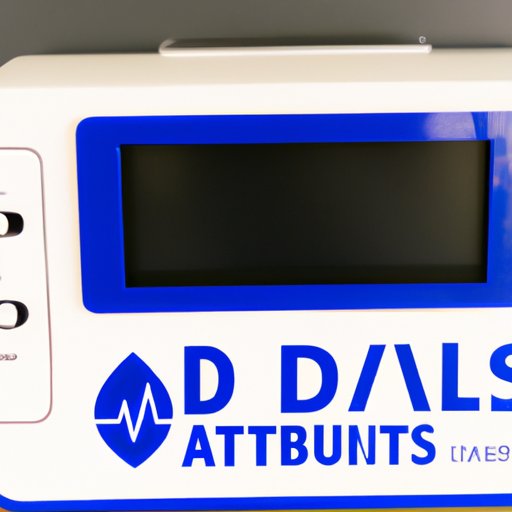Introduction
An Automated External Defibrillator (AED) is a device used to treat victims of sudden cardiac arrest. It analyzes the heart rhythm and can deliver an electric shock to the heart if necessary. AEDs are becoming increasingly accessible, with many public areas such as airports, malls, and schools installing them for easy access in case of emergency.
According to the American Heart Association, “More than 350,000 out-of-hospital sudden cardiac arrests occur annually in the United States” and “effective bystander CPR provided immediately after sudden cardiac arrest can double or triple a victim’s chance of survival.” Using an AED in combination with CPR can further increase the chance of survival.
Benefits of Automated External Defibrillators
Using an AED has many benefits, including:
Increased Survival Rate from Sudden Cardiac Arrest
The most significant benefit of using an AED is the potential to save a life. According to a study conducted by the University of Michigan Health System, “the use of automated external defibrillators increased survival rates from sudden cardiac arrest by 23 percent” compared to those who received no medical intervention at all.
Increased Accessibility to Life-Saving Technology
AEDs are becoming more widely available in public places, making it easier for individuals to access the life-saving device in the event of an emergency. This increased accessibility can make a huge difference in the outcome of a sudden cardiac arrest.
Improved Response Time for Medical Personnel
Having an AED on hand can help reduce response time for medical personnel. Bystanders can quickly administer a shock before the arrival of medical personnel, which can significantly improve the chances of survival.
Types of Automated External Defibrillators
There are three main types of AEDs that are available:
Public Access Defibrillators
Public access defibrillators (PADs) are AEDs that are available in public places such as airports, malls, and schools. They are usually wall mounted and equipped with voice prompts to help bystanders administer the device correctly.
Home Defibrillators
Home defibrillators are designed for home use and are typically smaller and more portable than PADs. They are ideal for those who are at risk of sudden cardiac arrest, such as those with a history of heart disease.
Portable Defibrillators
Portable defibrillators are designed for medical professionals to carry with them in case of an emergency. They are typically more advanced than PADs and home defibrillators, and may include additional features such as real-time data streaming and wireless connectivity.

Cost and Maintenance of Automated External Defibrillators
The cost of an AED depends on the type and features desired, but there are several factors to consider when budgeting for an AED, including:
Initial Cost of Purchase
The initial cost of purchase will vary depending on the type and features of the AED. Basic AEDs can range from $1,000 to $2,500, while more advanced AEDs can cost up to $10,000.
Ongoing Maintenance Costs
In addition to the initial cost of purchase, there are also ongoing maintenance costs associated with owning an AED. These costs may include regular maintenance checks, battery replacements, and software updates.
Battery Replacement
It is important to replace the battery in an AED regularly, as batteries can become depleted over time. The frequency of battery replacement will depend on the type of AED and how often it is used. Generally, it is recommended to replace the battery every two years.

Guide to Using an Automated External Defibrillator
Using an AED is not difficult, but it is important to be familiar with the steps involved. The following is a guide to using an AED:
Preparing the AED
The first step is to prepare the AED. This involves opening the AED case, turning on the device, and connecting the electrodes to the device.
Applying the Electrodes
Once the AED is prepared, the next step is to apply the electrodes to the victim’s chest. It is important to ensure that the electrodes are properly placed and secured.
Administering a Shock
The AED will then analyze the victim’s heart rhythm and determine whether a shock is needed. If a shock is needed, the AED will automatically administer the shock.
Follow Up Care
After the shock has been administered, it is important to provide follow up care to the victim. This includes providing CPR and calling for medical assistance.

Impact of Automated External Defibrillators on Public Health
The use of AEDs has had a positive impact on public health, including:
Increase in Successful Resuscitation Attempts
The presence of AEDs in public areas has led to an increase in successful resuscitation attempts. According to a study conducted by the American Heart Association, “the presence of AEDs in public places was associated with a significantly higher rate of successful resuscitation attempts.”
Improved Quality of Life for Survivors
Using an AED can also lead to improved quality of life for survivors of sudden cardiac arrest. A study conducted by the American Heart Association found that “patients who received an AED shock prior to arriving at the hospital were more likely to have a good neurological outcome.”
Increased Public Awareness about Sudden Cardiac Arrest
The increased availability of AEDs has also led to an increase in public awareness about sudden cardiac arrest. With more people aware of the signs and symptoms of sudden cardiac arrest, and the importance of early intervention, the chances of surviving a sudden cardiac arrest are greatly improved.
Conclusion
Automated external defibrillators (AEDs) are an important tool for treating victims of sudden cardiac arrest. They can increase the survival rate of victims, improve response times for medical personnel, and increase public awareness about sudden cardiac arrest. Although there are some costs associated with purchasing and maintaining an AED, the potential lifesaving benefits far outweigh the costs.
(Note: Is this article not meeting your expectations? Do you have knowledge or insights to share? Unlock new opportunities and expand your reach by joining our authors team. Click Registration to join us and share your expertise with our readers.)
